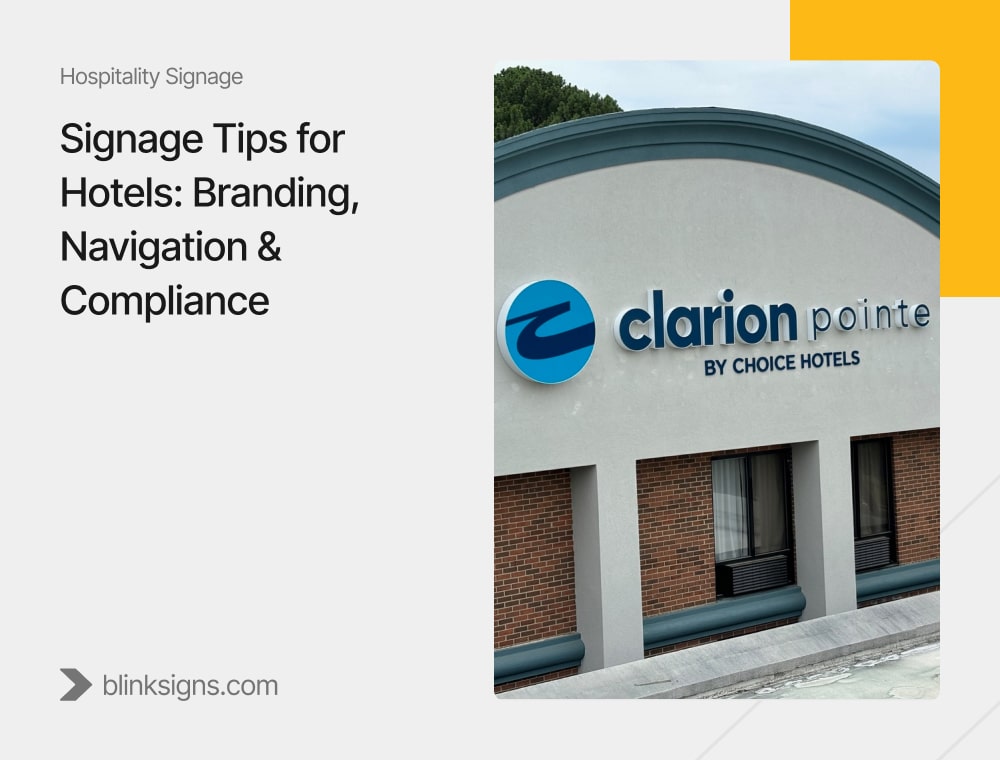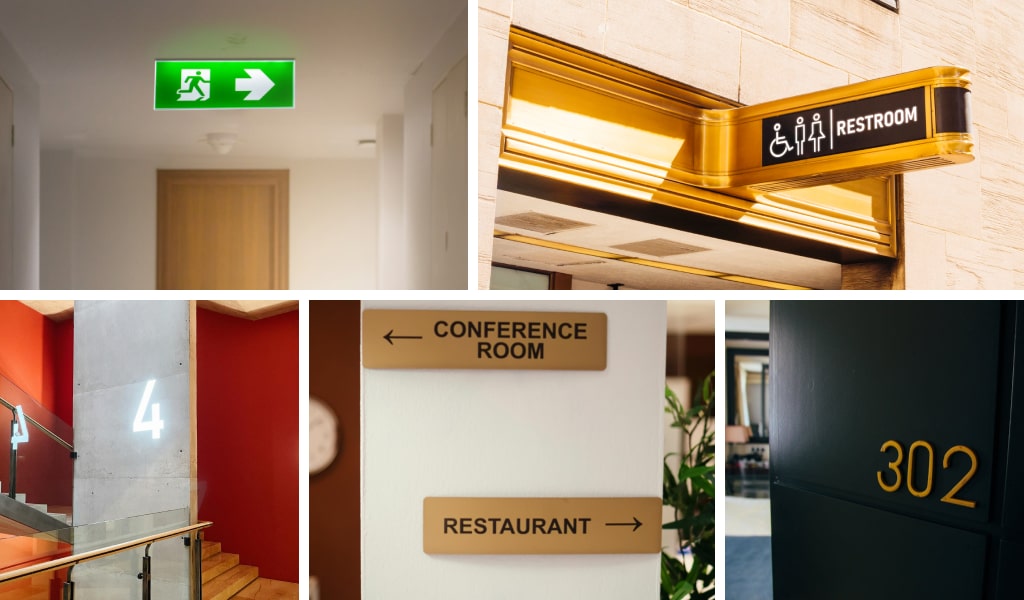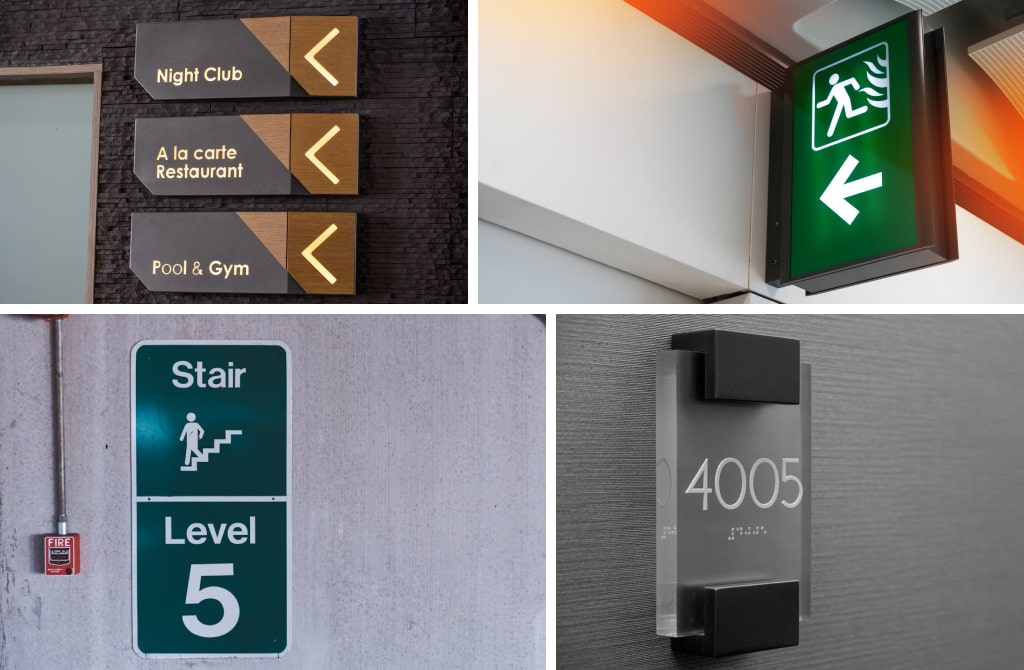
Signage Tips for Hotels: Branding, Navigation & Compliance

Featuring insights from
Abhi Goyal – CEO, BlinkSigns
In the hospitality industry, everything speaks—from the scent in the lobby to the placement of the concierge desk. But before a guest ever steps inside your hotel, there’s one thing that often speaks the loudest: your signage. That is why knowing the right signage tips for hotels can be a game-changer in shaping first impressions.
For hotel owners, developers, and asset managers, signage is one of the most overlooked aspects of the guest experience. Yet, it’s also one of the most impactful—affecting everything from brand perception to guest navigation, ADA compliance, and even occupancy rates.
To dive deeper into what makes signage successful in the hotel industry, we sat down with Abhi Goyal, CEO of BlinkSigns, who has helped dozens of national hospitality brands bring their signage visions to life.
The First Impression That Happens Before the Door Opens
“Your hotel signage is the first handshake between your brand and your guest,” says Abhi.
Whether it’s a boutique hotel tucked in a historic district or a high-rise Hilton near an airport, signage is the first thing guests see when they arrive—and often the last thing they remember.
According to a 2022 FedEx Office survey, 68% of consumers believe that signage reflects the quality of a business’s product or service. In hospitality industry, this couldn’t be truer. A weather-worn monument sign or outdated blade sign doesn’t just look bad—it signals neglect.
Abhi’s Tip: “We always tell hoteliers—treat your signage budget like your lobby renovation budget. It’s not décor. It’s branding, marketing, and compliance all in one.”
Signage as a Navigation Tool: Beyond the Lobby
Guests don’t just arrive—they explore. And in most cases, they do it without help.
“Wayfinding in hotels is invisible until it’s missing,” Abhi explains. “Then suddenly, you’ve got frustrated guests, bad reviews, and unnecessary calls to the front desk.”
Effective hotel navigation signage should:
- Direct guests from the parking lot to the check-in desk.
- Clearly label amenities like restrooms, fitness centers, and conference rooms.
- Include ADA-compliant signage with braille and tactile lettering.
- Provide elevator directories, floor numbers, and exit route maps.
- Feature modular signage that can be updated as room numbers or functions change.

Effective hotel navigation signage
Stat to Note: Poor signage contributes to up to 20% of negative guest experience reviews, according to internal BlinkSigns analysis across hotel partners.
Compliance Is Not Optional—It’s Brand Protection
In the hotel industry, ADA compliance and local code adherence aren’t optional—they’re legal requirements. But many properties don’t realize that signage is one of the most cited violations during inspections.
Abhi’s Tip: “We’ve helped hotels avoid thousands of dollars in potential fines just by updating their exit signage or adding braille room numbers. The best branding in the world won’t matter if you’re not compliant.”
Common Hotel Signage Compliance Areas:
- ADA Room Numbers with tactile and braille.
- Illuminated Exit Signs in all hallways and stairwells.
- Emergency Evacuation Maps on every floor and elevator bank.
- Directional Signs with contrast, mounting height, and non-glare finishes per code.
- Permitted Exterior Signs that follow local zoning and lighting rules.

Compliance Is Not Optional—It’s Brand Protection
BlinkSigns frequently helps hotels bundle signage permitting into their renovation or construction workflow—saving both time and costly re-dos.
A Lesson in Doing It Right
Abhi shares the story of a mid-sized hotel in Chicago that rebranded from an independent name to a national franchise. While they upgraded furniture, carpet, and digital systems, they put signage last.
“By the time we were brought in, they were already 60 days past their rebrand deadline. The new brand required very specific signage, but the local zoning district had different size limitations. We had to redesign, refile, and reinstall—all while the hotel was live with guests.”
The cost? Tens of thousands in delays and penalties. The lesson? Signage should never be an afterthought.
Abhi’s Tip: “Bring your signage partner in early. We don’t just print and install. We help hotels strategically design, permit, and future-proof their signage from day one.”
If you’re planning signage for your hotel—whether it’s a new build, rebrand, or renovation—Abhi leaves you with this:
1. Think Guest-First
“Start with the guest’s arrival and walk their path through the property. Every decision—from where your monument sign goes to how your elevator signs look—should serve that journey.”
2. Design for Longevity
“UV-resistant materials, durable finishes, and modular systems protect your signage investment for years.”
3. Partner with Experts
“Hotels are complex. You need a team that understands both brand standards and local codes. That’s how you avoid mistakes, delays, and guest frustration.”
Signage in hospitality is a combination of branding, navigation, and compliance. Get it right, and you’ve created a seamless, intuitive guest experience. Get it wrong, and it’s not just costly—it’s damaging to your reputation.
After covering key signage tips for hotels, it’s clear that success lies in the details—from visual impact to regulatory compliance. With decades of industry experience and a portfolio spanning national hotel chains and boutique independents, BlinkSigns is your trusted partner in hospitality signage—from design to installation.
Ready to plan your next hotel signage project?
Contact BlinkSigns to schedule a free consultation with our team.